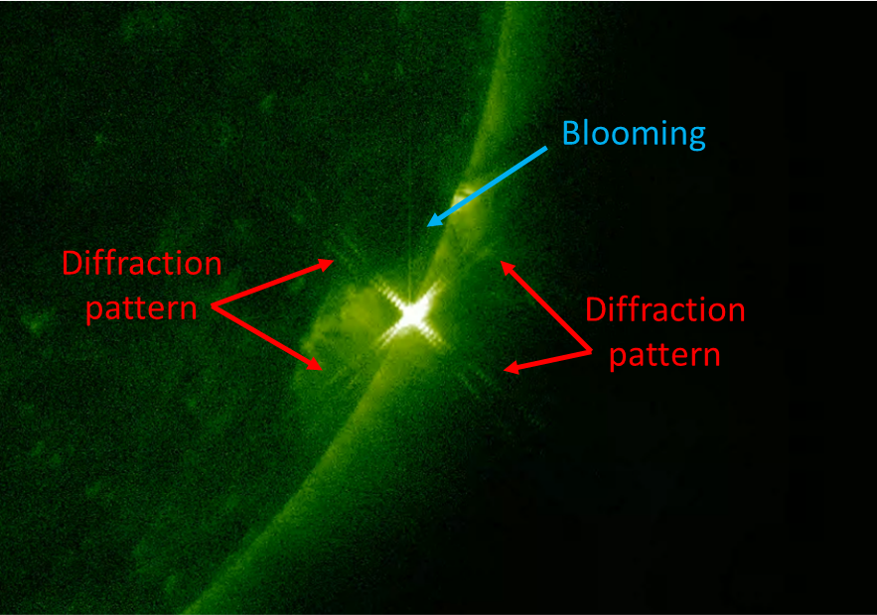Two C-class flares occurred on the Sun shortly after noon on 16 October: A C1.5 flare peaking at 12:57UT, followed by a C3.5 flare which reached its maximum at 15:11UT. Extreme ultraviolet (EUV) images clearly indicate that the eruption didn't take place in NOAA 2776, the only sunspot region visible on the solar disk at the time. This region was located in the southeast quadrant ("lower left"), whereas both flares originated from a source at or just beyond the southwest limb ("lower right"), most likely NOAA 2774 which was spotless when it rounded the solar limb early on 15 September. The "X" shape of the flares is not specfically related to the eruption, but an image artifact (Note 1).
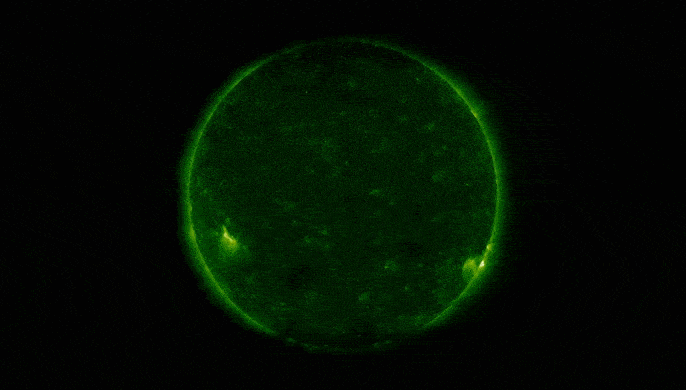
The SDO images underneath show a close-up of the C1.5 flare. On the left a white light image, on the right a view in EUV (AIA 094). The image shows that a nearby spotless region, visible in white light as a faculae field, is not involved in the eruption.
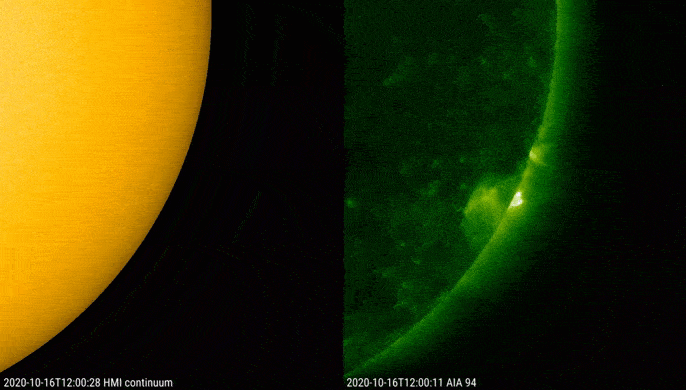
Both flaring events were accompanied by radio disturbances. As they happened during the day, the radioastronomy station at Humain, Belgium was able to observe these events. The top of the image underneath shows the evolution of the x-ray flux as measured by the GOES-16 satellite from 12:30UT until 15:30UT. The two flaring events can be seen as slight enhancements, with the second event a bit stronger than the first one. The lower part of the image is the radiospectrogram recorded by Humain. It covers the frequency range from 45 MHz to 1495 MHz (vertical axis; the lowest values are towards the top of the chart), over the same period of time (horizontal axis). One can see that the radio disturbances happen at or shortly after the peak of the flare, with the disturbance related to the first flare happening at lower frequencies (45-85 MHz), i.e. higher in the solar atmosphere, than the second one (200-600 MHz). Also the shape is somewhat different, in this case indicating that in particular the second flare may have been accompanied by a weak coronal mass ejection (CME). The radio bursts are slightly more enhanced than those observed earlier in the year by the Humain station (see this STCE Newsitem).
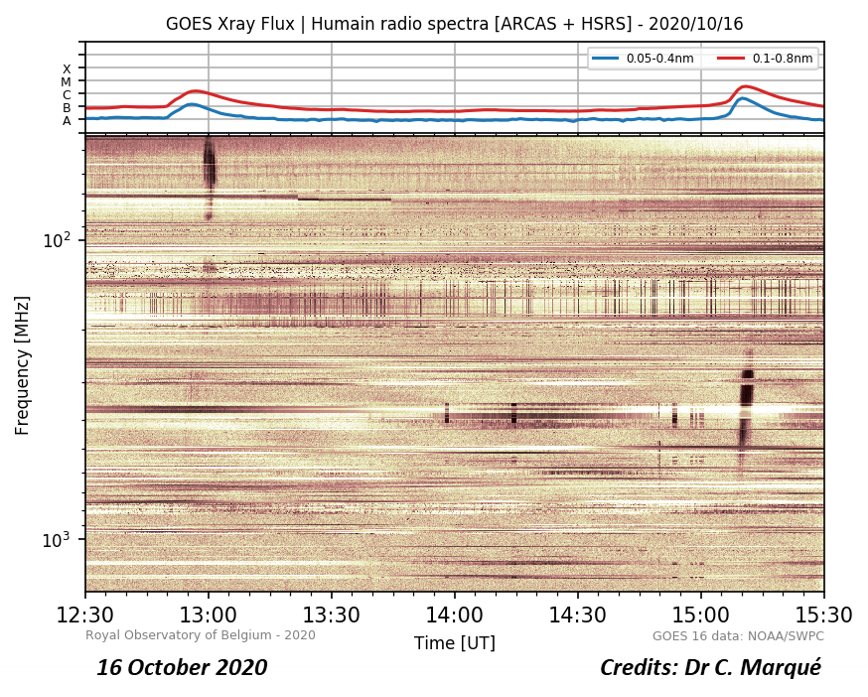
The presence of coronal waves was another hint that both flaring events may have been accompanied by CMEs. Coronal waves (alias EIT waves, alias EUV waves) are bright wave fronts that can be seen propagating through the corona (Sun's hot atmosphere) and are associated with coronal mass ejections (CMEs). This STCE newsitem provides more info on coronal waves. The waves can best be seen in EUV difference imagery (one image subtracted from the previous), such as in SDO/AIA 211. The annotated image underneath shows EUV images of the Sun, and on the right the difference image. Coronal waves can be seen emanating from the blast site, and in particular the northern portion can be observed very well during both flaring events. The EUV images also show that during the second flaring event, some mass was ejected.
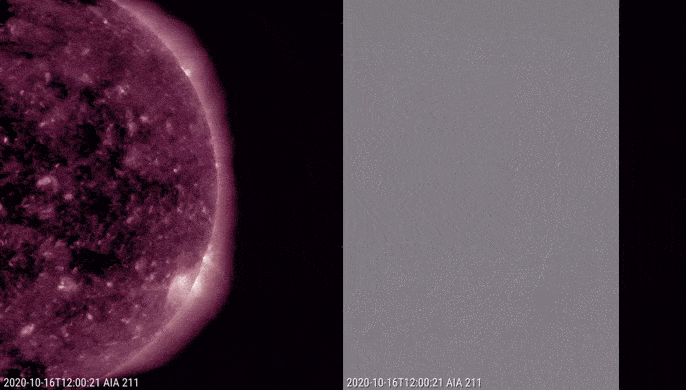
Sure enough, two small CMEs were observed at the solar west limb by SOHO's coronagraphs. Underneath difference images are showing both CMEs, in each case about 1.5 hours after the peak of the flaring event (CACTus). Due to their location and small size, these CMEs will not influence the earth environment.
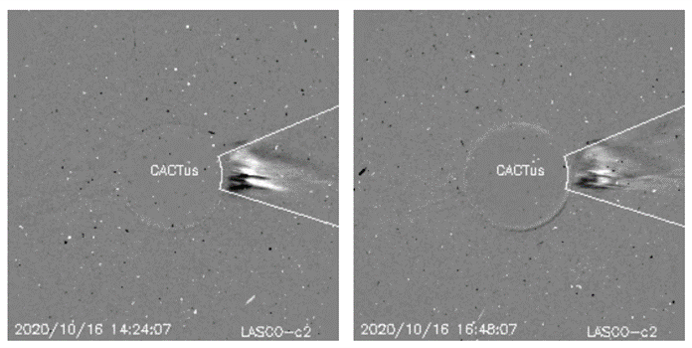
Note 1 - During large flares, EUV imagery such as from SDO/AIA often exhibit image artifacts called "blooming" and "diffraction fringes" as can be seen in the annotated image underneath. Pixels from the CCD camera can get saturated and lose their ability to accommodate additional charge, which therefore spreads into neighboring pixels, causing either erroneous measurements or further saturation. Such spread of charge is named "blooming" and typically shows up as a bright artifact along a privileged axis in the image. The optical setup of each AIA telescope is characterized by structures with uniform wire meshes used to support the thin filters that create the EUV passbands. The interaction between the incoming EUV radiation and the grids generates a diffraction effect depending on the source intensity ("diffraction fringes"). Interestingly, a paper by Torre et al. (2015) has shown that these image artifacts can be used to restore the original image (de-saturated). Of note is that the effects of blooming and diffraction are a lot smaller with the PROBA2/SWAP telescope, because of respectively the special detector (CMOS active pixel system) and the special characteristics of the nickel grid in the front filter (see Seaton et al. 2013).
